Pinpoint Heritage Museum
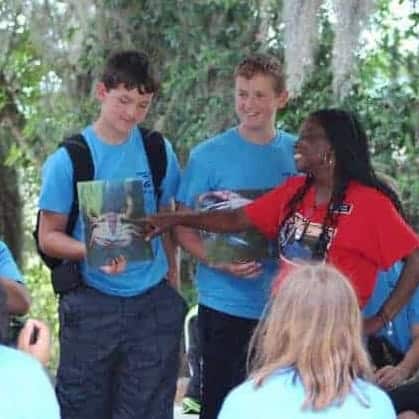
Pin Point Heritage Museum is located in the former A.S. Varn & Son Oyster and Crab Factory. The community was founded in 1896 by freed slaves after the Civil War. The former factory has been transformed into an educational center for visitors to authentically learn about the Gullah/Geechee culture directly from residents who grew up in the small, close-knit community. Guests can discover these unique lifeways, from daily life to religion, language and food.
Owens-Thomas House & Slave Quarters
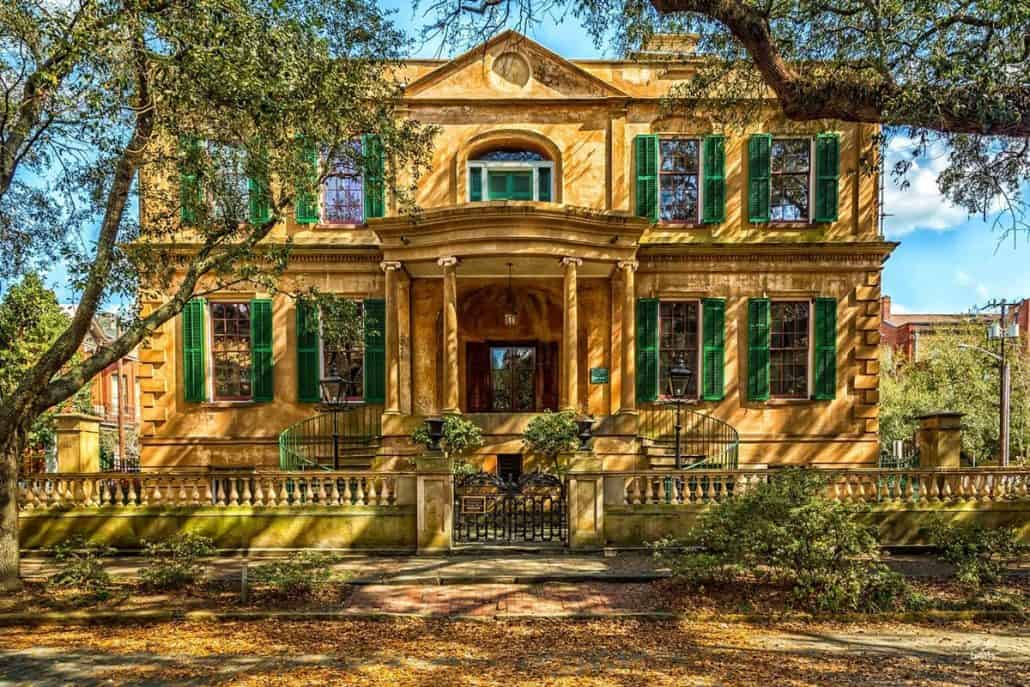
Built as a beautiful Regency style mansion in 1819, the Owens-Thomas House, along with its adjacent gardens, carriage house, and slave quarters, allows visitors to explore the complicated relationships between the most and least powerful people in the city of Savannah in the early 19th century.
History of the Richardson-Owens-Thomas House
In November 1816, work began on the new home of banker, shipping merchant, and slave trader Richard Richardson and his wife, Frances. The home was designed by English architect (and relative to Richardson by marriage) William Jay, but was constructed by builder John Retan and the team of free and enslaved men in his charge. The site also included a two-sided privy and a building located on the east end of the lot, which was divided into a carriage house and slave quarters.
The Richardsons moved into the home with their six children and nine enslaved men, women, and children in January 1819. Unfortunately for the Richardsons, the next three years saw steady decreases in their prosperity, including the financial Panic of 1819, a yellow fever epidemic, a fire that destroyed half the city, and the death of Frances and two of the children. By 1822, Richardson decided to sell the house and move to Louisiana, where he had family and business interests. He had been shipping enslaved people, mostly children, from Savannah to New Orleans for years.
By 1824, the Bank of the United States owned the house, which they leased to Mary Maxwell as a boarding house. The Marquis de Lafayette was a guest of Mrs. Maxwell when he visited Savannah in March 1825 as part of his whirlwind tour of the United States for the 50th anniversary of the American Revolution.
In 1830, George Welshman Owens, then mayor of Savannah, purchased the property at auction for $10,000. Owens, who was also a lawyer, planter, and politician, moved in with his wife, Sarah, and their six children in 1833. Over the years, Owens kept nine to 15 enslaved people on the property and held almost 400 men, women, and children in bondage on his plantations.
The last Owens descendant to live in the home was George Owens’ granddaughter, Margaret Gray Thomas. When Thomas passed away in 1951 with no direct heirs, she willed the house to the Telfair Academy of Arts and Sciences to be run as a house museum in honor of her grandfather, George Owens, and her father, Dr. James Gray Thomas. The site opened to the public in 1954.
Carriage House
Orientation Gallery
The south half of this building originally housed horses and carriages on the first floor with a hay loft on the floor above. Beginning in;November 2018, the first level of this building will house our Orientation Gallery. Exhibits in this space help put the story of the site into the larger context of local, regional, and national history. The site of the original hay loft now houses The Loft, a workspace for Telfair’s historical interpreters to study primary documents, examine archaeological artifacts, and research our sites’ history.
Slave Quarters
The north half of the building contains the original slave quarters for the site. This two-story structure was composed of three rooms on each level. Nine to 15 enslaved people, about half of whom were children, lived and worked on the site at any given time between 1819 and the end of the Civil War. Once the war ended, the space became servants’ quarters, housing many of the same people.
Now these these wonderfully preserved spaces offer new interactive exhibits to help visitors understand the day-to-day lives of the enslaved people who lived and worked in the space, as well as the most unique architectural feature of the house, the indoor plumbing.
Holiday Closures:
- New Year’s Day
- Martin Luther King, Jr. Day
- St. Patrick Day Observance
- Easter
- Thanksgiving Day
- Christmas Eve, open 10am-3pm
- Christmas Day
- New Years Eve Day, open 10am to 3pm
Old Fort Jackson
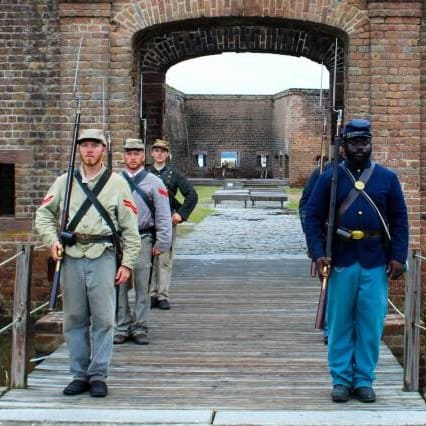
Old Fort Jackson is a must-see National Historic Landmark offering daily cannon firings and exciting interactive programs for adults, kids and families! Only minutes away from historic downtown Savannah, you can experience unique views of Savannah’s riverfront and walk on the grounds of one of the oldest brick fortifications on the East Coast.
History
This fortification is located on the Savannah River, just 3 miles east of the city. It was constructed in 1808 as part of President Thomas Jefferson’s Second System coastal defense initiative and named after Revolutionary War patriot James Jackson. This brick fort was constructed over an old earthen battery from the Revolutionary War which had been called “Mud Fort.” Soldiers were stationed at Fort James Jackson to guard Savannah during the War of 1812. Following the War of 1812, two periods of construction continued expansion of the fort from the 1840s-1850s, prior to the outbreak of the American Civil War.
Local Confederate militia units occupied the fort at the start of the Civil War in 1861. In 1862, it became the headquarters for Savannah’s river defenses after the fall of Fort Pulaski. In 1864 the Confederate troops quickly evacuated Fort Jackson just prior to the arrival of federal troops under the leadership of General William Tecumesh Sherman after his infamous “March to the Sea,” leaving Fort Jackson under control of federal troops. The last American soldiers to be stationed at Fort Jackson were members of the 55th Massachusetts, an African- American unit of the Federal Army.
The War Department abandoned the fort in 1905 and the state of Georgia reopened it in 1965 as a maritime museum. After the state decided to close the museum in 1975, the newly formed nonprofit Coastal Heritage Society approached the State in 1976 asking permission to re-open and operate the site, which was granted. The historic site was now referred to as Old Fort Jackson. In 1978, Fort Jackson and CHS came under the leadership of Scott W. Smith. Operation continued to grow with modest success as did development of educational programming for regular guests and student field trips.
Currently, Old Fort Jackson has a successful model of independent operation and a solid reputation of delivering high-quality, engaging educational programming for booked groups. This program offering has been expanded to regular operation for daily museum guests and includes cannon, musket firings and other interactive & hands-on activities.
Oglethorpe Square
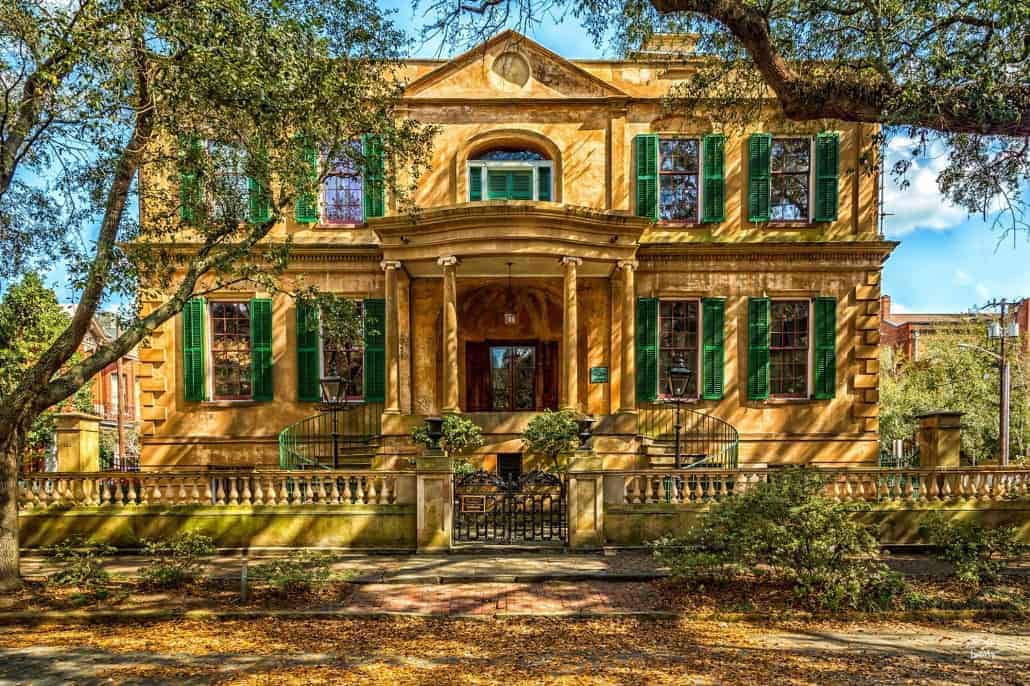
Oglethorpe Square was laid out by James Oglethorpe upon his return from England in 1742. This was the final square that he laid out personally while residing in the colony. Today the square is home to many historically and architecturally significant homes, most built in the English Regency and Greek revival styles. The building that now houses The President’s Quarters Inn was once occupied by the prominent local judge William Law. At present the many lovely homes that surround the square are its primary claim to fame. Oglethorpe Square has no monuments. However, there have been discussions about adding a World War II memorial at some point in the future. For now, Oglethorpe Square stands as a memorial to the love and effort of Savannah preservationists, many of whom find the square’s Owens-Thomas House to be one of their finest triumphs.
- THE OWENS-THOMAS HOUSE – Built in 1816, The Owens-Thomas House is one of the best examples of English Regency architecture in America, and has been designated as a National Historic Landmark. Designed by William Jay for the wealthy banker Richard Richardson the home was one of the grandest of its day, and no expense was spared in its construction. As it happened, Mr. Richardson occupied the home for only three years before heavy financial losses forced him to turn the property over to the bank. The house was subsequently purchased and turned into one of the city’s earliest and most prestigious lodging houses, catering to the elite travelers of the day. The Marquis de Lafayette was a guest in the home during a visit to Savannah in 1825, and gave a stirring address from the home’s exquisite cast-iron veranda. In 1830, George Welshman Owens, the Mayor of Savannah purchased the home, and it remained in the family until Owens’ granddaughter, Miss Margaret Thomas, donated the property to the Telfair Museum. The home is now a lovely house museum, filled with period furnishings. Of particular interest to visitors are the fabulous parterre garden, and the home’s original carriage house. The carriage house features one of the few, and perhaps the oldest urban slave quarters to survive to modern times. If you have the inclination, The Owens-Thomas House is well worth a visit.
Riverboat Narrated Sightseeing Cruise
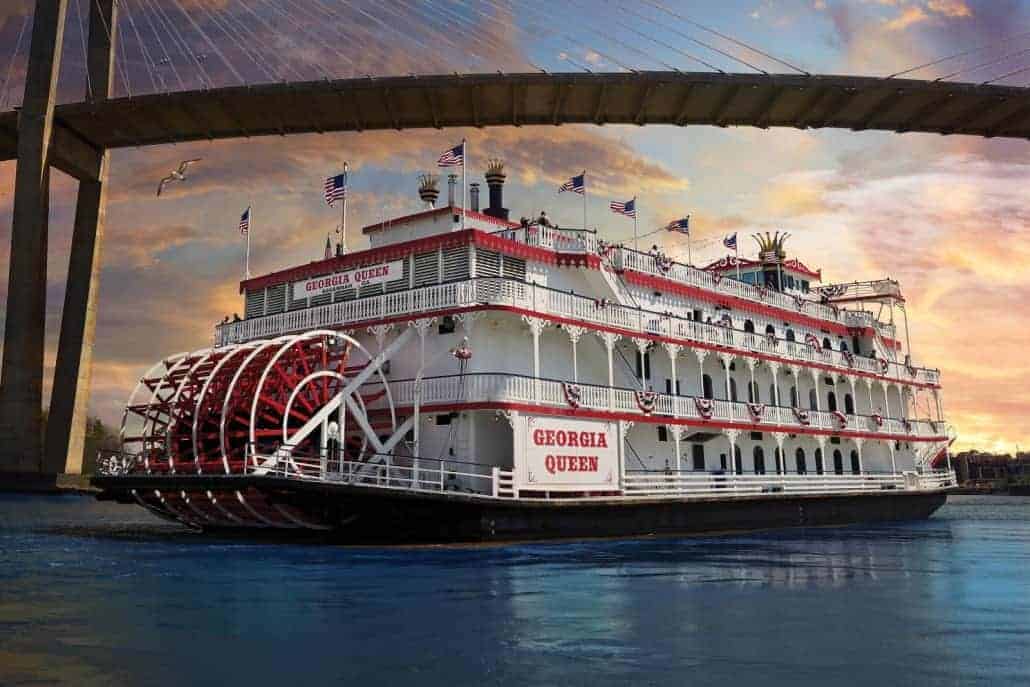
IMPORTANT: Be aware that this tour normally operates 1 to 2x per day. Advance reservations are not required. They do not allow upgrades to your ticket to the dinner or sightseeing cruise.
During this 1.5 hour cruise you can experience the river that was the lifeblood of Savannah! Hear the Captain’s intriguing tales and historic facts about this modern port and the ships that visit from all over the world. Then make your way down river to Old Fort Jackson, home of one of the largest and oldest original artillery pieces in the country! Take advantage of the great photo opportunities of Savannah’s historic riverfront and skyline. Snacks and beverages are available on board at our Riverboat Snack Shop.
Scheduled Tour Times
Boarding from 12:00 to 12:30 p.m., Sailing at 1:00 p.m., Returning at 2:30 p.m. Every Saturday & Sunday in December & January Every Wednesday through Sunday in February Daily from March through November PLUS December 26-31
Boarding from 2:30 to 3:00 p.m., Sailing at 3:30 p.m., Returning at 5:00 p.m. Saturday only in February, March & November Daily from April through October
Mighty Eighth Air Force Museum
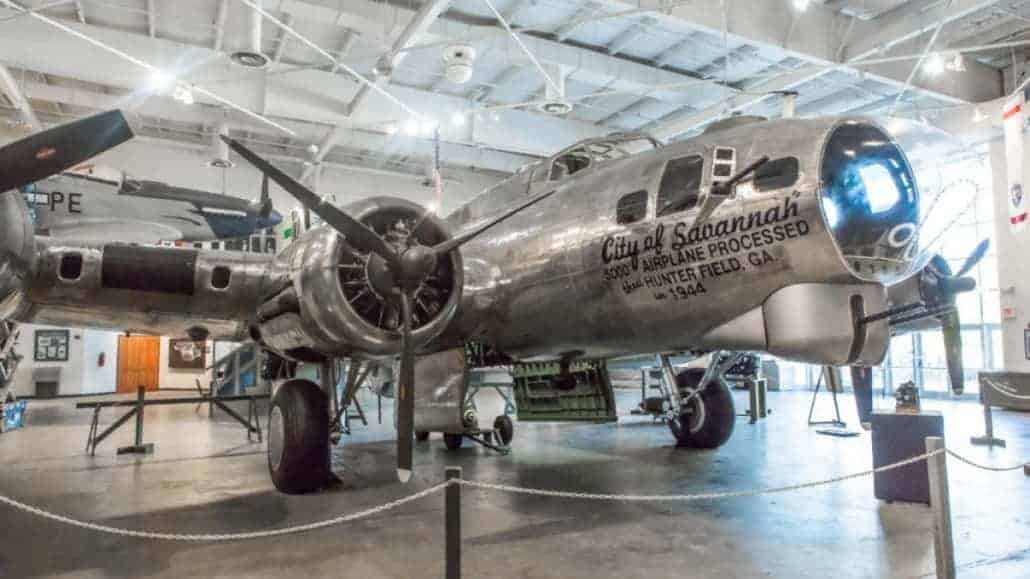
Visit one of the world’s most powerful museum experiences, the National Museum of the Mighty Eighth Air Force. Located only minutes from historic downtown Savannah, where the Eighth Air Force was activated in 1942, the 90,000-square-foot museum is dedicated to preserving the history and stories of the Eighth Air Force, the “greatest air armada of all time.” Hear the unforgettable stories of bravery, experience a bomber mission and briefing, and see the ongoing restoration of the World War II B-17 Flying Fortress “City of Savannah” inside the Museum’s Combat Gallery. The National Museum of the Mighty Eighth Air Force is an experience not to be missed while visiting Savannah!
We are pleased to be able to offer group tours of the National Museum of the Mighty Eighth Air Force. These tours can be self-guided or guided by our incredible Museum Docents. If you choose for your group to tour self-guided (on your own), you will want to plan on a minimum of two hours. Guided tours are two hours in length. If you have limited time, just let us know and we will tailor a shorter tour for your needs.
The National Museum of the Mighty Eighth Air Force is home to a traditional English Pub. You can enjoy lunch there, Monday thru Friday from 11 am to 2 pm, with food prepared by our in-house restaurant, Miss Sophie’s Marketplace.
Johnson Square
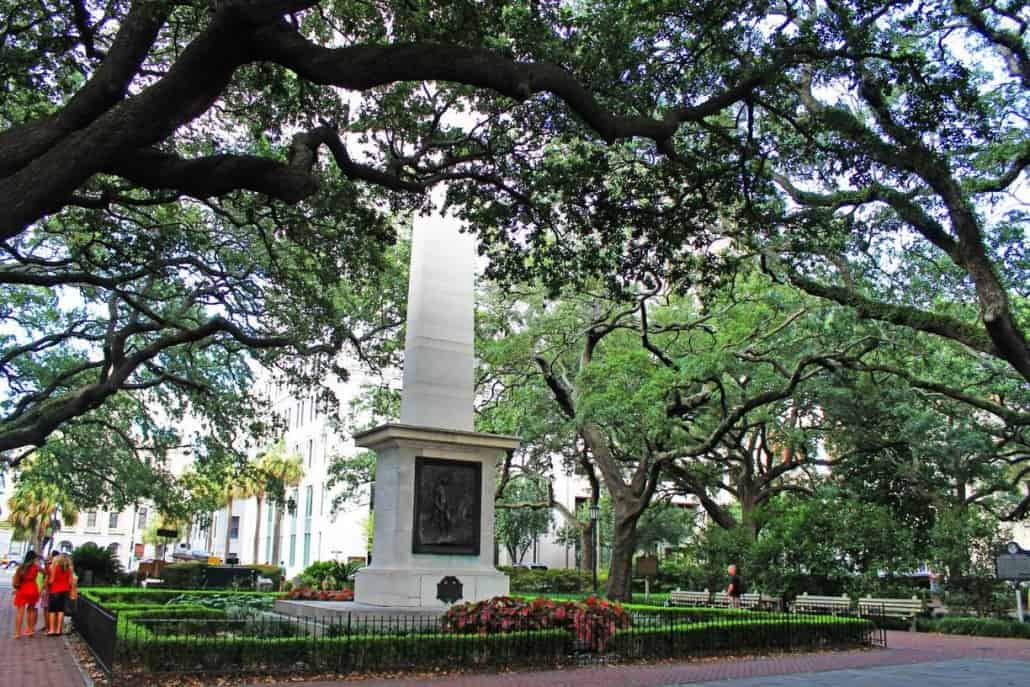
It was the first of Oglethorpe’s original squares and is still Savannah’s largest. It was named after South Carolina Governor Robert Johnson, who was a friend of Oglethorpe’s and provided assistance to the early settlers of the colony. This square was laid out in 1733 and was a central focus of daily life in the earliest days of the city. Thus, the settlers gathered in this square to get the time of day (which they read on a sundial which had been built there), post public notices, get water for their families, socialize, and even to bake their bread. The square’s two fountains now mark the places where the city’s communal ovens once stood.
- JOHNNY MERCER BENCH – Johnson Square also pays homage to Johnny Mercer, Savannah’s favorite son. The popular and commercially successful songwriter wrote more than 1,000 songs between 1929 and 1976. Mercer also received eighteen Academy Award nominations, won four Academy Awards, composed music that was featured in several Broadway shows, and was a cofounder of Capitol Records. A beautiful bench carved from white marble pays tribute to this remarkable entertainer. The bench is engraved with the titles of some of Mr. Mercer’s greatest hits, and a profile sketch of the singer which was hand drawn by the music legend himself.
- NATHANIEL GREENE MONUMENT – Dominating the center of Johnson Square is an impressive white obelisk marking the final resting place of Nathanael Greene, a hero of the Revolutionary War. The French General Marquis de Lafayette, who was so instrumental in assisting the Continental army during the Revolutionary War, laid the cornerstone for the monument honoring Greene in 1825.
- CHRIST CHURCH – On the south east corner of the square you will find Christ Church, now known as Christ Anglican Church. Also known as “the Mother Church of Georgia,” Christ Church was the first church in Savannah and was originally established as an extension of the Church of England. The church continues to be home to a vibrant Christian community today.
Jepson Center for the Arts
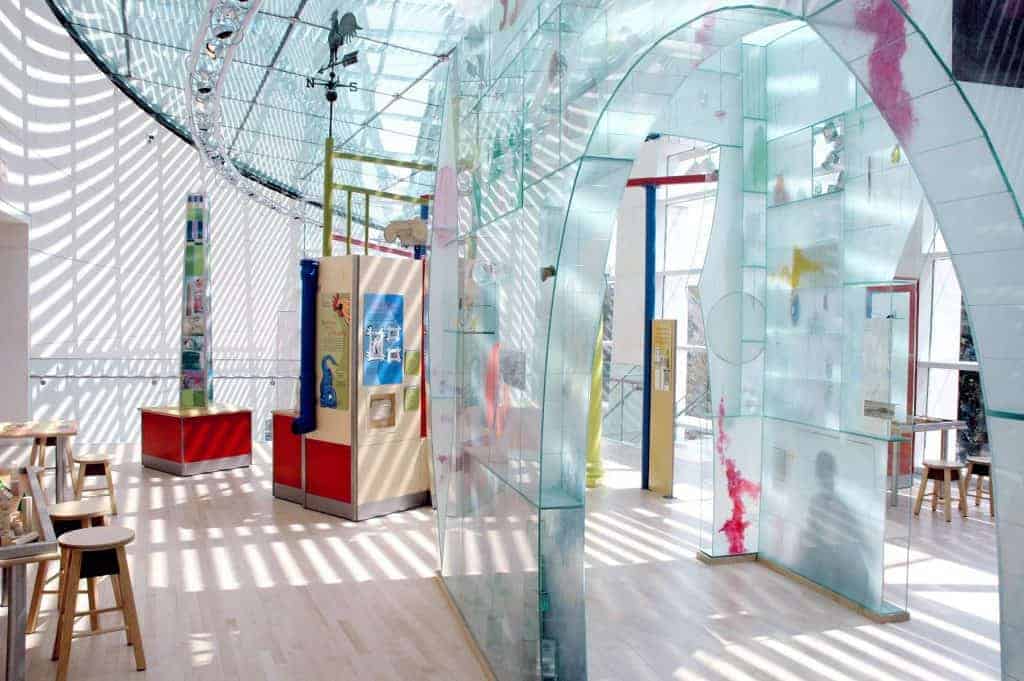
The Jepson Center links the history preserved by the Owens-Thomas House & Slave Quarters and Telfair Academy to the future of art and architecture. The strikingly modern building, opened in 2006, is filled with art, activities, and educational opportunities that will encourage learning for generations to come.
Holiday Closures:
- New Year’s Day
- Martin Luther King, Jr. Day
- St. Patrick Day Observance
- Easter
- Thanksgiving Day
- Christmas Eve, open 10am-3pm
- Christmas Day
- New Years Eve Day, open 10am to 3pm
Historic Homes Walking Tour
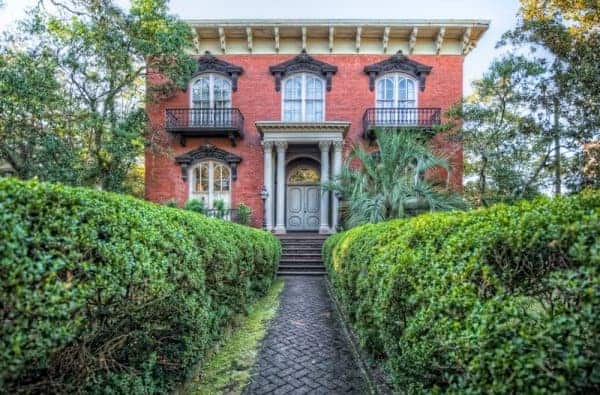
Savannah has charmed visitors for centuries with her history, architecture and famous hospitality. With this tour, you will:
- Explore the rich architectural heritage that spans two centuries
- More than a discussion on architecture, this enchanting walk through the heart of the Historic District focuses on Savannah’s majestic mansions and their residents.
- Learn about Savannah’s ongoing historic preservation movement and hear of the contributions of residents dedicated to protect and conserve our rich history.
- This tour may include depending on availability, a visit to one of Savannah’s most beautiful historic homes.
- Tours departs from Warren Square.
One of the places you’ll see on this tour is the Owens-Thomas House, widely regarded as the premiere example of regency architecture in the United States, and learn about the achievements of architect William Jay. You’ll also see the Green Meldrim House, where Gen. William T. Sherman was a “guest” during the Civil War. Other house highlights includes discussions on the development of domestic dwellings in Savannah, from colonial times to the present, featuring fine examples of architecture that span two centuries.
Harper Fowlkes House Tour
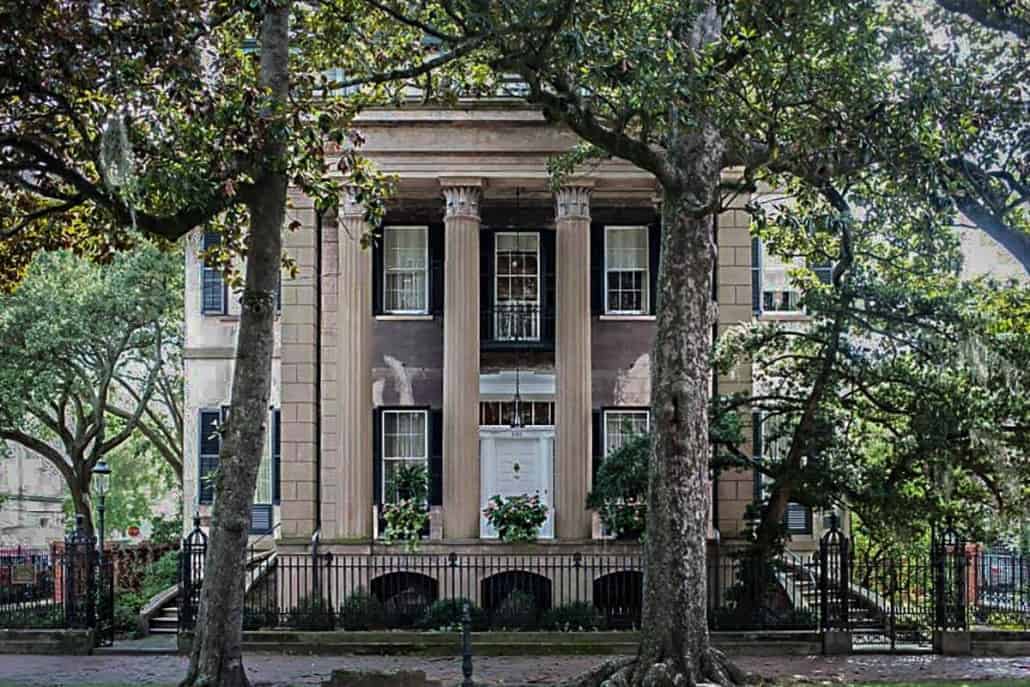
This Greek Revival mansion located in Savannah’s historic district was built in 1842, and graciously opens their doors for tours. The house is beautifully furnished with antiques, yet continues to retain the feel of a warm and inviting home.
The Harper-Fowlkes House has served as the headquarters for the Society of the Cincinnati in the State of Georgia since Alida Harper-Fowlkes bequeathed the house to the Society in 1985.
The exterior and interior architectural features of the home have intrigued students and travelers from all over the world. One of the featured treasures of the house is the elliptical opening viewed from the lower and upper levels of the entry and stairwell.
What to Expect:
- Docent led tour of Greek Revival historic home.
- See fine furnishings and architectural features of the home.
NOTICE: This property can close for special events. To ensure they’re open prior to visiting, visit this link for updates: View Schedule

